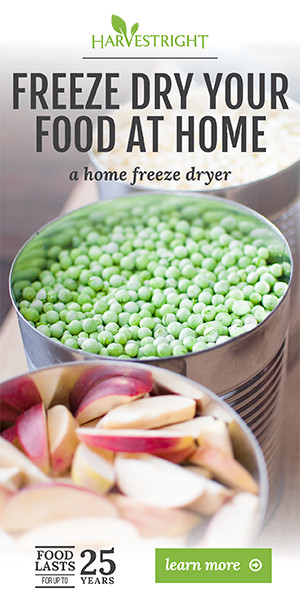Foods You Cannot Freeze-Dry
Freeze-drying is a remarkable food preservation method that can turn your favorite foods into long-lasting, shelf-stable snacks. However, not all foods are suitable for freeze-drying, and attempting to process certain items can lead to undesirable results or even chamber mishaps. To help you navigate the world of freeze-drying effectively, we've compiled a comprehensive list of foods that you should avoid freeze-drying.
Foods to Avoid Freeze-Drying
Oily or Fatty Foods
Foods high in oils and fats, such as cooking oils, peanut butter, Nutella, nuts, butter, pure chocolate, and mayonnaise, are not suitable for freeze-drying. The freeze-drying process primarily targets water removal, and the presence of fats and oils makes it challenging to achieve proper dehydration. These foods tend to go rancid over time, and their shelf life is significantly shorter compared to other freeze-dried items. If you do attempt to freeze-dry high-fat foods, be prepared to use them within one year, and note that rehydrating can also be more challenging.
High-Sugar Syrupy Foods
Foods with high sugar content, especially those in syrupy form, do not fare well in the freeze-dryer. The crystalline structure of sugar can lead to explosive situations inside the chamber when the vacuum pump activates. Honey, in particular, is notorious for creating a massive mess during freeze-drying, covering the chamber walls and necessitating extensive cleanup. Foods to avoid in this category include jam, syrup, jelly, preserves, and sodas.
Foods That Just Don't Work
Certain foods simply do not produce desirable results when freeze-dried. Examples of these include Oreos, Twizzlers, Swedish Fish, fruit snacks, candy canes, and licorice. These items tend to condense and become excessively hard during freeze-drying. While some have reported limited success with Pop-Tarts, they generally end up with a tough texture rather than the desired crispiness.
Alcohol
Foods with high alcohol concentrations do not freeze-dry well. Alcohol behaves similarly to water during the freeze-drying process, sublimating out of the food. Consequently, freeze-dried items with alcohol content cannot be stored in this form. However, foods with small amounts of cooking alcohol in their recipes can be successfully freeze-dried.
Vinegar
Like alcohol, vinegar also sublimates during freeze-drying and cannot be stored in freeze-dried form. It's important to note that vinegar is an acid and should not be used for cleaning within the chamber. Small amounts of vinegar used in recipes should not pose a problem, but the resulting freeze-dried product cannot be stored long-term.
Bones
Some individuals hope to freeze-dry bones to make fresh bone broth. However, freeze-drying bones does not yield the desired results. It's more effective to create the broth first and then freeze-dry it, preserving the rich flavors and nutrients without any issues.
Understanding which foods are unsuitable for freeze-drying is just as important as knowing which ones are compatible with this preservation method. By steering clear of oily, fatty, sugary, and certain other food types, you'll avoid potential mishaps and ensure a smoother freeze-drying experience. In the next section, we'll explore the exciting world of foods that are perfect candidates for freeze-drying, so you can expand your culinary horizons and enjoy a variety of freeze-dried treats.
Stay tuned for our next article to discover the freeze-drying superstars that will elevate your food preservation game!
Additional Resources
For in-depth guidance on freeze-drying techniques, food safety, and best practices, we recommend exploring our book: The Only Beginner Freeze Drying Book You'll Ever Need This resource offers comprehensive insights into freeze-drying, ensuring you can enjoy safe, delicious, and long-lasting freeze-dried meals with confidence.
Check out :Freeze-Drying Mistakes to Avoid
Foods You Cannot Freeze-Dry

Foods You Cannot Freeze-Dry

